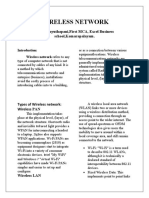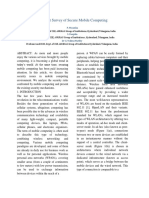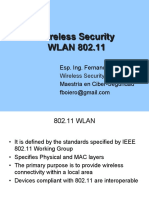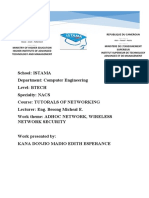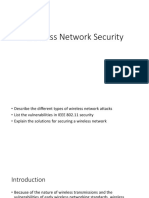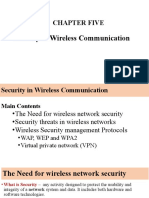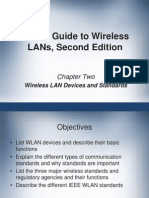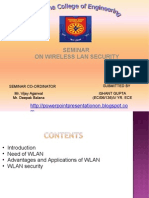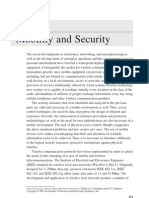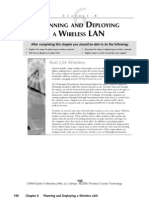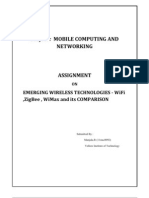0% found this document useful (0 votes)
22 views26 pagesLec25 Wireless Security (A)
The document provides an overview of wireless security, highlighting the vulnerabilities of wireless networks and various types of wireless attacks, particularly focusing on Bluetooth technology. It discusses the IEEE 802.11 wireless standard, its evolution, and different network modes, including infrastructure and ad-hoc modes. Additionally, it outlines key risks associated with wireless security and the components involved in wireless networking.
Uploaded by
ImanCopyright
© © All Rights Reserved
We take content rights seriously. If you suspect this is your content, claim it here.
Available Formats
Download as PDF, TXT or read online on Scribd
0% found this document useful (0 votes)
22 views26 pagesLec25 Wireless Security (A)
The document provides an overview of wireless security, highlighting the vulnerabilities of wireless networks and various types of wireless attacks, particularly focusing on Bluetooth technology. It discusses the IEEE 802.11 wireless standard, its evolution, and different network modes, including infrastructure and ad-hoc modes. Additionally, it outlines key risks associated with wireless security and the components involved in wireless networking.
Uploaded by
ImanCopyright
© © All Rights Reserved
We take content rights seriously. If you suspect this is your content, claim it here.
Available Formats
Download as PDF, TXT or read online on Scribd
/ 26









